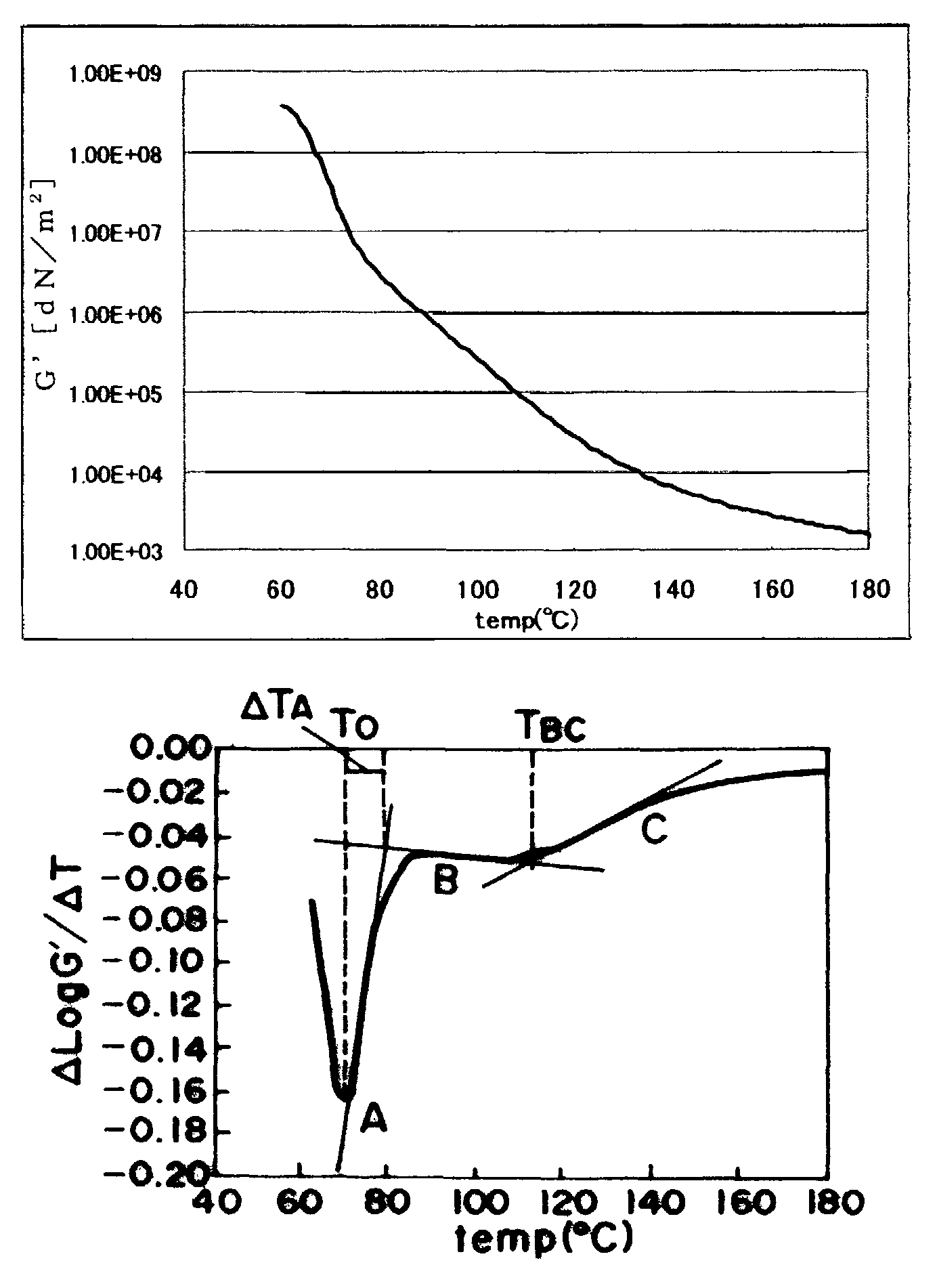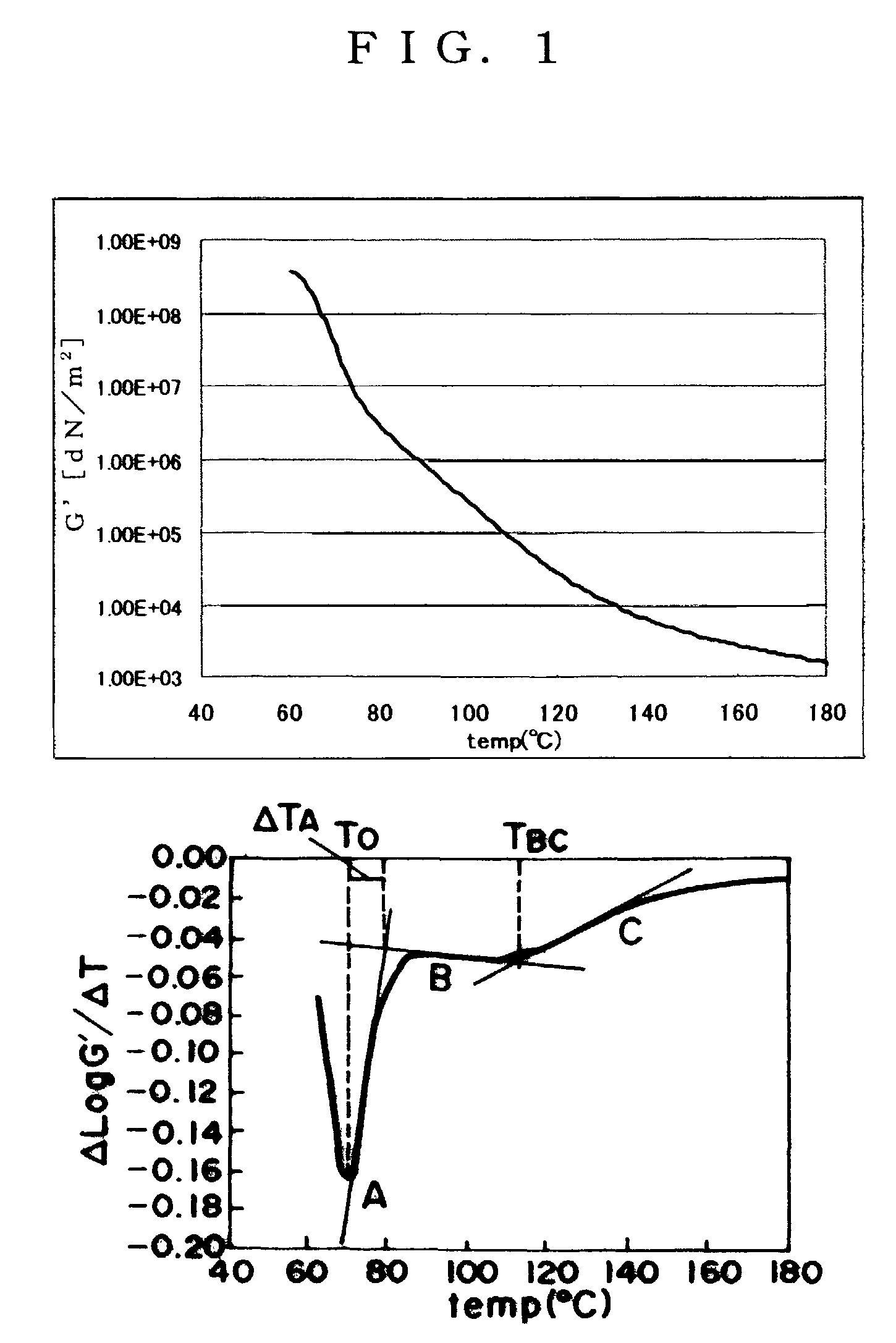Non-magnetic toner
a non-magnetic toner and a technology of toner, applied in the field of toner, to achieve the effect of excellent fixing ability and developing ability
- Summary
- Abstract
- Description
- Claims
- Application Information
AI Technical Summary
Benefits of technology
Problems solved by technology
Method used
Image
Examples
production example 6
of Toner
[0166]A toner (F) was obtained in the same manner as in except that the amount of the 70% solution of the polymerization initiator 1,1,3,3-tetramethylbutylperoxy-2-ethylhexanoate in toluene was changed to 12 parts by mass.
production example 7
of Toner
[0167]A toner (G) was obtained in the same manner as in except that: the amount of divinylbenzene to be added was changed to 0.05 part by mass; and the temperature at which stirring was performed by using a paddle stirring blade after granulation was changed to 65° C.
production example 8
of Toner
[0168]A toner (H) was obtained in the same manner as in except that: no hydrocarbon-based wax was added; and 9 parts by mass of an ester wax (behenyl behenate: maximum heat absorption peak=75° C., Mw=700) were added.
PUM
 Login to View More
Login to View More Abstract
Description
Claims
Application Information
 Login to View More
Login to View More - R&D
- Intellectual Property
- Life Sciences
- Materials
- Tech Scout
- Unparalleled Data Quality
- Higher Quality Content
- 60% Fewer Hallucinations
Browse by: Latest US Patents, China's latest patents, Technical Efficacy Thesaurus, Application Domain, Technology Topic, Popular Technical Reports.
© 2025 PatSnap. All rights reserved.Legal|Privacy policy|Modern Slavery Act Transparency Statement|Sitemap|About US| Contact US: help@patsnap.com



